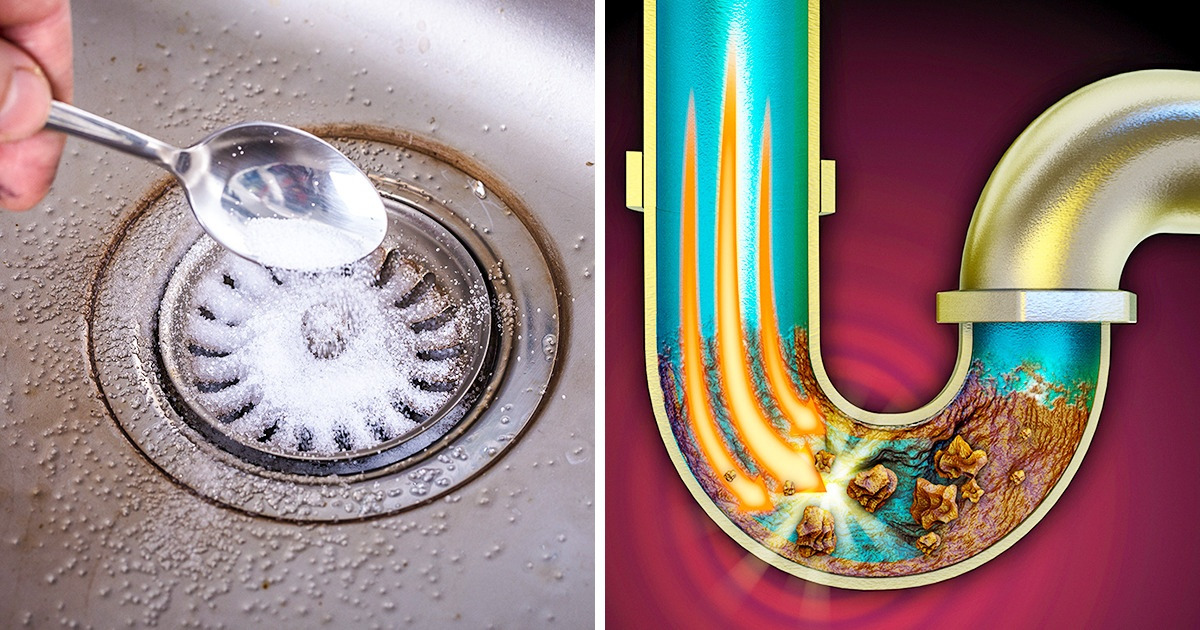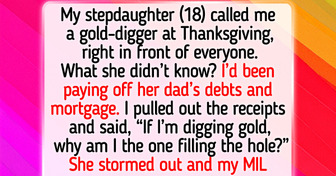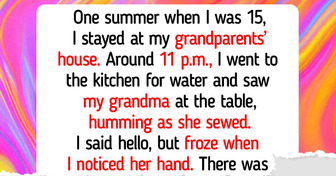10 Moments That Proved the Worst Betrayal Comes From Home


Has your kitchen sink become clogged? Learn the different methods you can use to clear your drain and how you can prevent blockages like this from happening again in the future.
Bright Side has collected 8 simple and safe ways to unclog a kitchen sink at home. Read and save them for emergencies.
Calling a professional plumber can take too much time and money. Sometimes the situation with the clogged sink can be fixed with some quick methods you can try yourself. But before you start pulling all the products from your drawers, let’s first take a look and assess the severity of the problem.
You can tell your drain is getting clogged because the water flow gets slow or stops altogether. If it’s the first time you are unclogging a sink drain, it may take you some time to solve the issue at hand, but in the end, you’ll learn so much that in future repairs, you’ll know just what needs to be done.
Avoid trying to unclog your drain with products like bleach and Coca-Cola. Bleach is a product that can damage your health, your family’s health, and even that of your pets. If you use bleach first to try to solve the issue and it doesn’t work, it is probable that you will have to pour something else into your drain.
You should always be very careful with mixing ingredients since sometimes that mix can cause toxic gas that can severely damage the health of your lungs. On the other hand, using Coca-Cola to solve this problem can be done safely, but this liquid can make the drain develop a sticky surface.
In this case, that same stickiness can cause another blockage, as things might get stuck in there, and that is exactly what we’re trying to avoid. This is why some professionals suggest only using this method for big clogs.
If your kitchen sink is full of water due to the clogged drain, try to remove it by using a cup since draining it is not possible in this scenario. It’s done in order to see more clearly into the sink, but this won’t really unclog the drain. When you finish removing all the water, you should also remove any residue that is sitting on the surface of the sink.
In some cases, removing the waste at the surface is all you need to do to fix the issue, but other times, you might need to make additional steps for results. Remember, if you have a garbage disposal in your kitchen sink, do not put your fingers near the blades, safety should always come first.
Let’s start with a strong solution for those who don’t start fixing something until it becomes too serious for lighter measures. First of all, the magic starts with pouring hot water down the drain. It’ll help to soften a clog and break it up a little. Who would have thought that with simple ingredients you might already have in your kitchen, you can unclog the drain?
If the clog isn’t serious or just started to form, you can opt for lighter measures. Salt will clean the pipe from the inside, removing bacteria and unpleasant odors at the same time. Because its effect is pretty mild, you’ll probably need to repeat the process several times — especially if the clog is bigger than you expected.
Vinegar and baking soda are the world’s classics when it comes to drain clog removal. This is a fast and simple solution you might not even have to spend a penny on because you most likely already have these ingredients in your kitchen.
You can even use this mixture to prevent future clogs in your drain. Apply the solution every time you think it necessary to refreshen your drain system. Vinegar can also help to kill bacteria that are living in your sink, which is causing unpleasant smells in your house.
Sodium hydroxide is a magic chemical that has the ability to turn some hard substances into liquids. It’s used as an ingredient in anti-clog remedies, making them especially powerful, because it can even break up hair and other debris. To make use of this magic ingredient:
If chemical reactions don’t work, you may need to do some physical removal. P-trap is a curved pipe under your sink which can collect grease and small debris. Due to its form, it becomes the cause of most of the clogs in your kitchen.
Some traps have a plug you can use for cleaning, without removing the trap itself, but it’s always better to take it off and rinse with hot water.
Have you put the P-trap back in place yet? No? Then wait a minute. This is the perfect moment to use a drain snake. Since the P-trap is already clean and clear, you need to unscrew the trap arm.
A hanger is basically a method that replaces a drain snake if you don’t have one or if your clog isn’t that far down. This method is very easy and cheap — let’s just hope you have some wire hangers lying around in your home.
That’s it! Now you can use it as a regular drain snake.
This is probably the most surprising point on our list, but it’s actually pretty similar to the previous one. Time for the heavy artillery! An important note to remember: you can’t do this with every vacuum cleaner — only with a wet & dry vac. Please, also remember you may need help with the switch control, so don’t do it alone.
Remember that this way should be used only if the other methods didn’t help. If you’ve tried any chemical treatments, wait at least 8 hours before giving the vacuum a try.
If all of the different methods we listed here fail, don’t be discouraged. Calling a professional is always a great choice if there’s something that exceeds our knowledge and abilities. This option won’t be as cheap as the others, but you can make sure the problem is fixed correctly.
Try to ask for referrals when looking for a good plumber, as not everyone is a professional in their field. This way, you will also avoid further headaches.
When we’re talking about the kitchen sink, a common cause of blockage can be food residue from our meals. This is exactly why it might be better to compost or throw away any waste instead of placing dishes with residue on them in the sink.
Some of the foods that can cause a clear blockage inside the drain are meats, potatoes, pasta, high-fiber foods, etc. Besides food, other common things that cause clogs in sinks are long hairs, fabric, towels, plastic bottle tops, etc.
All the sinks in our house are in danger of becoming clogged, but everything depends on our habits and our will to change them.
Is this a common problem at your house? How do you cope with it? Do you prefer professional help or deal with it on your own? Which methods do you usually use? Please, share your experience in the comments!











